Record Reviews
7 Reviews Found. Use search to find more reviews or follow the links in the review text.
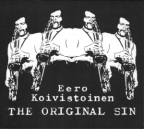 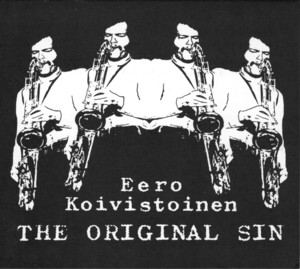 | EERO KOIVISTOINEN ~ THE ORIGINAL SIN
SVART 307 (Barcode: 6430077093621) ~ FINLAND ~ Jazz
Recorded: 1971 Released: 2021
"The Original SinFind albums with this title", recorded on August 13, 16 & 23, 1971, was the fourth album released by Finnish saxophonist / composer / arranger Eero KoivistoinenFind albums by this artist. Aged 25 at the time, Koivistoinen was already recognized at the time as a central figure on the burgeoning Finnish Jazz scene.
During his student days at the Sibelius Academy in Helsinki, one of the first European educational institutions to recognize Jazz as a valid musical Art Form worthy of academic studies, Koivistoinen frequented the Finland´s Capital Jazz club scene, performing at jam sessions. By 1967 he already had his first trio with bassist Pekka SarmantoFind albums by this artist (brother of pianist / composer Heikki SarmantoFind albums by this artist) and the legendary drummer Edward VesalaFind albums by this artist, who is often considered as the Godfather of modern Finnish Jazz. The trio played adventurous free-improvised Jazz, being the pioneers of Free Jazz in their country. Sadly, the trio never recorded an album and the only recorded evidence of their performances can be found on a live EP recorded at the Espoo Jazz Festival in 1967.
In 1967 the newly founded Finnish Jazz Federation (FJF), probably the best professional Jazz organization in Europe at the time, selected Koivistoinen as the first recipient of the annual Georgie Award in recognition for his outstanding talents. Two years later Koivistoinen performed for the first time outside of his country´s borders at the Montreux Jazz Festival in Switzerland (his performance at Montreux as a member of the International Festival Big Band was recorded and released on PolydorFind albums on this label), winning the festival´s competition for bands, which in turn led to his appearance at the Newport Jazz Festival in the US, exposing his talents on the global scale.
In the early 1970s Koivistoinen continued his studies in Jazz composition at the Berklee College of Music in Boston, where numerous of his compatriot Jazz musicians also studied over the years, starting with Heikki Sarmanto, who upon his return home brought over the American guitarist Lance GundersonFind albums by this artist who plays on this album. During the 1970s Koivistoinen recorded a stream of exceptional albums, which featured his compositional and arranging skills as well as his brilliant saxophone playing. Constantly re-inventing himself, his music kept changing during this decade and touched upon various Jazz genres, including his pioneering contribution to Jazz-Rock Fusion, but always remaining his very own.
Starting with "ValtakuntaFind albums with this title" (1968) and continuing with "OdysseusFind albums with this title" (1969), "For ChildrenFind albums with this title" (1970), "The Original Sin" (1971), "Muusa Ja RuusaFind albums with this title" (1971), "Wahoo!Find albums with this title" (1972), "3rd VersionFind albums with this title" (1973), "The Front Is BreakingFind albums with this title" (1976), "LabyrinthFind albums with this title" (1977) and finally "Live At The Belmont Jazz ClubFind albums with this title" (1977) Koivistoinen produced a body of work of amazing depth, beauty, sophistication and intellectual significance, which remains as a wonderful illustration of the Finnish and European Jazz heritage during that decade.
However, by the end of the 1970s, the immense popularity, which European Jazz managed to kindle, was gradually losing its steam. Record labels, owned by international mogul corporations, lost interest in any kind of adventurous music, Jazz included, and the number of Jazz releases went down considerably, a situation which affected Finland as well. Undeterred by this turn of events Koivistoinen decided to take matters into his own hands and established in 1983 one of the first musician-owned independent record labels, PROFind albums on this label Records, which enabled him to realize his musical projects.
This album is a deeply significant milestone in Koivistoinen´s musical development, since it presents for the first time the true depth of his compositions as well as his overall musical approach. It is also his first work with a large-scale ensemble, which enables him to utilize his arranging skills to a full extent.
The six compositions present here were recorded by three different lineups; a tentet ("Sinner", "Both & And" and "Rock & Roll"), a septet ("The Original Sin") and a sextet (the remaining two). The tentet comprised of: Eero Koivistoinen – tenor, alto & soprano saxophones, Tapani LuuppolaFind albums by this artist – trumpet, Jussi AaltoFind albums by this artist or Erkki LipponenFind albums by this artist – trombone, Pekka PoyryFind albums by this artist – tenor & alto saxophone, Pentti LahtiFind albums by this artist – baritone saxophone, Eero OjanenFind albums by this artist – piano, Lance Gunderson – guitar, Pekka Sarmanto – bass and Reino LaineFind albums by this artist & Esko RosnellFind albums by this artist – drums. The sextet comprised of: Koivistoinen, Ojanen, Gunderson, Sarmanto, Laine and Rosnell and the septet added Unto Haapa-ahoFind albums by this artist on bass clarinet.
Both the music and the performances are absolutely breathtaking, although the album focuses on ensemble playing rather than on extensive soloing, but of course there are still plenty of most impressive solos. An atmosphere of serenity, contemplation and wide-open spaces, typical in Finnish music, prevails even in the up-tempo passages, which turns listening to this album into a most satisfying love affair with music. The fact that it is now almost 50 years old is completely meaningless in this context, where true classics only get better with time.
Thanks to SvartFind albums on this label Records for making this musical treasure available again. Listeners interested in Finnish Jazz legacy are recommended to check out also the other Svart Records reissues documenting this burgeoning period.
Side Note
The above are my liner notes included on this album's artwork.
I am honored when asked by the Artists to write liner notes for their albums, always hoping that my words reflect the true spirit of the music. This is also a symbol of our mutual respect and friendship developed over the years.
The same is also true when Record Labels ask me to write liner notes for their releases, mostly in the case of reissues of archival albums, which is a symbol of their appreciation of my knowledge and historical perspective and my recognition of their dedication to the preservation of the history of recorded music and the effort to keep human Culture and Aesthetics alive.
| | Updated: 11/06/2021Posted: 11/06/2021 | CD 1 Mini-Sleeve Remastered Recommend To A Friend |
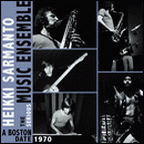  | HEIKKI SARMANTO SERIOUS MUSIC ENSEMBLE ~ A BOSTON DATE
PORTER 4002 (Barcode: 656605854625) ~ FINLAND ~ Jazz
Recorded: 1970 Released: 2008
This is one of those albums, which immediately invoke the recurring question: "How many recordings like this one remain hidden and unreleased all over the world?" The fact that it took 38 years for this gem to surface is criminally negligent, to put it mildly, with the only solace being the proverbial better late than never. Finnish pianist / composer Heikki SarmantoFind albums by this artist has been one of my favorite musicians for the last four decades, always awe-inspiring and never disappointing. His life-time achievements indisputably deserve a book-sized biography (unfortunately not written yet) and his role as Europe´s leading Jazz personality and a prominent creator of the emancipated European Jazz is sadly little known outside of a tiny circle of connoisseurs and researches. In fact the entire Finnish music scene often appears to be the one of world´s best hidden secrets, which is amazing in view of the miraculous contribution of Finnish musicians and composers to the Pantheon of the overall human musical culture. Apparently even the most devoted music fans and critics often suffer from chronic narrow-mindedness and Xenophobia, with Americans leading the camp, with pride and remarkable consistency, over the years.
Although recorded in 1970, this session does not reflect Sarmanto´s early musical steps. He was 31 years old at the time and already a seasoned musician, with extensive Classical Music education (a graduate of the Helsinki Sibelius Music Academy - the country´s most prestigious musical education institution) and extensive Jazz experience going back almost a decade earlier as member of several Jazz ensembles active on the country´s burgeoning scene. In 1964-65 Sarmanto took part in the recording of Finland´s first modern Jazz album, the legendary "The Modern Sound Of FinlandFind albums with this title" by saxophonist / flautist Esa PethmanFind albums by this artist, and his piano playing on that album already sounds refined and focused. In 1968 Sarmanto was the first Finn to be awarded a scholarship at the Berklee College of Music in Boston, which gave him a chance to get some formal Jazz education (the Jazz department of the Sibelius Academy would be established only in the early 1980s, and of course Sarmanto would be appointed its first department head).
Sarmanto used his time in Boston not only to expand his formal Jazz horizons, but also to mingle and play as much as he could on the local Jazz scene, which was quite active at the time. The Berklee students and the local musicians often gigged together and soon enough ensembles were formed. Following a brief home visit in 1969, during which Sarmanto recorded his first album as a leader, a live sextet recording released as "Flowers In The WaterFind albums with this title" (on which Pethman is also featured), he returned to Boston to "wrap up" his Berklee affairs. During that period he formed the quintet, quite accidently, which is often the best way for things to happen, which is featured on this semi-professional recording. The quintet consists of Sarmanto on piano, another Finnish giant, saxophonist / flautist Juhani AaltonenFind albums by this artist, who followed Sarmanto to Berklee but lasted only one semester (without a grant the finances were just against all odds), Czech bassists George MrazFind albums by this artist, who also arrived in Boston on a Berklee grant (together with compatriot pianist Jan HammerFind albums by this artist), escaping the brutal Warsaw Pact forces invasion of their homeland, following the brief "Spring of Prague" in 1969, the first major crack in the Berlin Wall. The remaining two musicians were guitarist Lance GundersonFind albums by this artist and drummer Craig HerndonFind albums by this artist, both Bostonians at the time. The quintet was nicknamed, half-jokingly, The Serious Music EnsembleFind albums by this artist, a name which would stick to several Sarmanto´s groups in the future, featuring the core of this quintet.
The three Europeans and two Americans obviously had no difficulty in communicating musically, and it´s hardly surprising that they chose to play mostly Free Form, for several reasons. The air was still reverberating with the sounds of Albert AylerFind albums by this artist, Eric DolphyFind albums by this artist and John ColtraneFind albums by this artist, with the US Free Jazz scene at its peak by the end of the 1960s (unfortunately soon to be almost completely neglected, passing the torch to the Europeans). The limited, if any, rehearsal time the ensemble had before entering the studio, obviously left most of the content to be developed at the spur of the moment, making collective improvisation the only logical path to follow. And perhaps the youthful spirit of rebellion had also something to do with it, considering Berklee´s extreme conservatism, which is legendary even today. Aaltonen, the oldest and most experienced musician on board, already had extensive Free Jazz practice, after playing with Finnish pioneers of the genre, most notably with drummer Edward VesalaFind albums by this artist, and his contributions are the most consistent, with remarkable power of expression, intensity and technical brilliance rivaling the Masters of the genre.
The six pieces played during the session, all composed by Sarmanto, are performed in one continuous flow with no gaps between them. Typically, after a briefly stated theme, the musicians enter a series of exchanges, with one, two or even three players soloing simultaneously, with the rhythm section frequently changing the tempo. Most of the material is up-tempo, except for the beautiful ballad, which ends the set (dedicated to Margareth ChaloffFind albums by this artist, the legendary piano teacher), which is the gentlest and most structured piece on the album, featuring the exquisite bass work by Mraz and more typical of Sarmanto´s future output. In many respects the session is quite typical European Free Jazz, resembling many similar musical encounters happening in Europe at the time, especially in the UK, but also in Poland, Germany and the Netherlands. It is quite distinctly different from American Free Jazz, which demonstrates rawer and more spontaneous approach but lacks the European Classical Music background, which is deeply implanted in the minds of European musicians, evident even in the most extreme Improvised Music experiments. In many respects, this session is probably one of the most "European sounding" recordings ever captured at a US studio.
It is really interesting to compare this session with the material recorded by the almost identical quintet (exchange Mraz with Heikki´s brother bassist Pekka SarmantoFind albums by this artist) just a few months later and released as Sarmanto´s second (first studio) album "CounterbalanceFind albums with this title" (also reissued on PorterFind albums on this label Records). With Aaltonen playing exclusively flute and Sarmanto switching to Fender Rhodes, this seems to be a completely different group, even if still pretty much in the Free vain. The European influence simply becomes overwhelming, changing the music dramatically. Even if the sound quality of this recording is not up to modern digital standards (the recording was most probably not intended to be commercially released), the musical content and the immense historical importance of this session make it an indispensible document of the highest value.
Kudos to Luke MoslingFind albums by this artist, the brave owner of Porter Records, for releasing this treasure and making it available to us, the music lovers, and saving a lost gem from extinction. Sarmanto´s followers worldwide will be obviously delighted to hear this, as should be every connoisseur of good music, especially those who follow the emergence of the modern European Jazz. Brilliant stuff!
Visitors' Comments
Dr. Rafael Augusto Lara Palmeros
One of the most impressive, extraordinary and wonderful work from real modern European Jazz.¡¡Very essential!!. More of five stars.
| | Updated: 29/09/2017Posted: | CD 1 Recommend To A Friend |
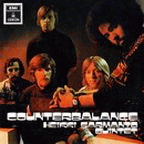  | HEIKKI SARMANTO ~ COUNTERBALANCE
PORTER 1506 (Barcode: 656605863825) ~ FINLAND ~ Jazz
Recorded: 1971 Released: 2008
This is the second album by Finnish pianist / composer Heikki SarmantoFind albums by this artist, recorded soon after his return from Boston, where he attended the Berklee College of Music – the first Finnish musician to do so. The core of the quintet, which recorded this album, was established in Boston, and recorded a semi-formal session there, released only 38 years later as "A Boston DateFind albums with this title" on the PorterFind albums on this label label. With three Finnish musicians: Sarmanto on Fender Rhodes, flautist Juhani AaltonenFind albums by this artist and bassist Pekka SarmantoFind albums by this artist (Heikki´s brother and life-long collaborator), and two Americans: guitarist Lance GundersonFind albums by this artist and drummer Craig HerndonFind albums by this artist (Pekka replaced George MrazFind albums by this artist, who played on the Boston session, recorded just few months earlier), this quintet continues the explorations originated in their first encounter, but this time the approach is quite different.
Whereas the Boston session was almost completely spontaneous and unplanned, exploring the realm of Free Jazz collective improvisation, this recording session is obviously well planned and therefore much more organized. Although there is plenty of great improvisations here and even some Free Form, the melodic content is clearly stated and well developed, with an overall atmosphere of typical Nordic tranquility and serenity in the air. Sarmanto´s switch to the Fender Rhodes and Aaltonen using the flute exclusively have a deep impact on the album´s overall sound and ambiance, which are predominantly relaxed and deeply reflective. The worldwide explosion of Fusion, which happened in the early 1970s and which affected the Finnish scene as much as any other musical scene in the world can be heard here as well, with Sarmanto / Aaltonen interplays resembling the Chick CoreaFind albums by this artist / Joe FarrellFind albums by this artist dialogs on the early Return To ForeverFind albums by this artist albums.
But above all, the music, composed almost entirely by Sarmanto (with Gunderson contributing one composition), is a sublime example of European Jazz at its peak, combining the elements of Jazz tradition with harmonies from the European Classical Music and heritage from European ethnic music. The Scandinavian Jazz musicians and composers, and Finnish ones in particular, were amongst the pioneers of Jazz-World Fusion, and many of their creations were deeply rooted in local folklore. Aaltonen´s beautiful flute lines are full of clever innuendos to Finnish (but not only) folklore, as are many of Sarmanto´s piano lines. Pekka´s excellent bass playing is a clear evidence of his extraordinary talent and ability, which can be heard on countless Finnish Jazz albums over the years. Herndon provides a great rhythmic drive to the music and Gunderson solos and interacts with the other members of the quintet almost telepathically.
Overall this a beautifully played and well constructed piece of music, which one tends to remember fondly for a very long period of time – I know I did, as I never forgot this album since hearing it for the first time some 37 years ago. For people who never heard it before, this is a wonderful opportunity to discover a masterpiece of European Jazz, which has been unavailable for decades and only now reissued on CD for the first time. Don´t even think twice!
| | Updated: 29/09/2017Posted: | CD 1 Digipak Recommend To A Friend |
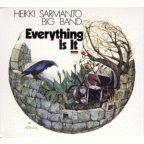  | HEIKKI SARMANTO ~ EVERYTHING IS IT
PORTER 1514 (Barcode: 656605789521) ~ FINLAND ~ Jazz-Classical Fusion
Recorded: 1972 Released: 2011
"Everything Is ItFind albums with this title", recorded on September 13 & 14, 1972, was the fourth album released by Finnish pianist / composer Heikki SarmantoFind albums by this artist. Born June 22, 1939 Sarmanto was considered already a "veteran" of the modern Finnish Jazz scene at the time. A graduate of the Sibelius Academy in Helsinki, Sarmanto contributed his talents to multiple local ensembles active on the burgeoning Finnish Capital´s Jazz club scene and participated in several landmark recordings in the 1960s. His earliest recordings (1962) were with saxophonist / flautist Esa PethmanFind albums by this artist as a regular member of his group, culminating with the recording of "The Modern Sound Of FinlandFind albums with this title" (1964), which is considered as the first completely original modern Finnish Jazz album. In the following year Sarmanto recorded the album "For Friends And RelativesFind albums with this title" (1965) as a member of the Christian Schwindt – Otto DonnerFind albums by this artist quintet, also considered as an early milestone of Finnish Jazz.
In 1968 Sarmanto was the first Finn to be awarded a scholarship at the Berklee College of Music in Boston, which gave him a chance to get some formal Jazz education (the Jazz department of the Sibelius Academy would be established only in 1983, and of course Sarmanto would be appointed its first department head). Sarmanto used his time in Boston not only to expand his formal Jazz horizons, but also to mingle and play as much as he could on the local Jazz scene, which was quite active at the time. The Berklee students and the local musicians often gigged together and soon enough ensembles were formed.
Following a brief home visit in 1969, during which Sarmanto recorded his first album as a leader, a live sextet recording released as "Flowers In The WaterFind albums with this title" (recorded July 8, 1969) he returned to Boston to "wrap up" his Berklee affairs. During that period he formed a quintet, quite accidently, which is often the best way for things to happen, which played mostly Free Jazz based on the heritage of Albert AylerFind albums by this artist, Eric DolphyFind albums by this artist and John ColtraneFind albums by this artist. The quintet recorded a session at a local studio, which was formally released on CD only 38 years later as "A Boston DateFind albums with this title" (recorded September 18, 1970, released 2008) on PorterFind albums on this label Records. The quintet consisted of Sarmanto on piano, another Finnish Giant, saxophonist / flautist Juhani AaltonenFind albums by this artist, who followed Sarmanto to Berklee but lasted only one semester (without a grant the finances were just against all odds), Czech bassists George MrazFind albums by this artist, who also arrived in Boston on a Berklee grant (together with compatriot pianist Jan HammerFind albums by this artist), escaping the brutal Warsaw Pact forces invasion of their homeland, following the brief "Spring of Prague" in 1969, the first major crack in the Berlin Wall. The remaining two musicians were guitarist Lance GundersonFind albums by this artist and drummer Craig HerndonFind albums by this artist, both Bostonians at the time. The quintet was nicknamed, half-jokingly, The Serious Music EnsembleFind albums by this artist, a name which would stick to several Sarmanto´s groups in the future, which featured the core of this quintet.
Following his graduation from Berklee Sarmanto returned to Finland, with Gunderson and Herndon following suit (they both decided to live in Finland for a while). Since Mraz opted to stay in the US and Aaltonen already returned to Finland earlier, Sarmanto had four members of his quintet in place. Mraz was replaced by Sarmanto´s brother, bassist Pekka SarmantoFind albums by this artist, and this new lineup recorded Sarmanto´s second (first studio) album "CounterbalanceFind albums with this title" (recorded June 8, 1971 - also reissued on Porter Records). A remarkable album, which features Aaltonen playing flute exclusively and Sarmanto switching to Fender Rhodes, and seems to be recorded by a completely different group, even if still pretty much in the Free Jazz vain. The European influence simply becomes overwhelming, changing the music dramatically.
Recorded just three months after "Counterbalance", "Like A FragonardFind albums with this title" (recorded September 14, 1971), the third album by Sarmanto, was the first giant step in Sarmanto´s exceptional musical journey. In contrast to his earlier recordings, which consisted of separate and unrelated musical themes, this is the first time Sarmanto, the composer, undertakes the task of producing a concept album, which consists of a series of compositions connected by one common idea. The result becomes a Jazz Mass, a novel idea, which Sarmanto will pursue again in the future with the extraordinary "New Hope Jazz MassFind albums with this title" (1979).
"Everything Is It", which followed a year later, was another giant step in the same direction, but on a grander scale in every direction. The ensemble is expanded into a Big Band; the music includes a fully developed suite in four parts, which lasts for over 28 minutes and two additional pieces, both lengthy as well (7 and 11 minutes); the scope of the compositions now amalgamates elements of Jazz, Folklore and Classical music.
In retrospect Sarmanto´s audacity and vision are truly prophetic, since such attempts to create cross-genre music would become commonplace only decades later. The Big Band assembled for this recording is a bona fide Who´s Who of Finnish Jazz at the time and includes the finest soloists, many of which were leaders of their own ensembles. Consisting of three trumpets, two trombones, six saxophones, piano, bass and two drummers (another bold decision by Sarmanto) the Big Band enables the composer a much wider scope of tonal expression, which of course he takes full advantage of. The vocal parts, or the libretto (in English), written by Diana GlassFind albums by this artist, is performed by a young and promising soprano from the Opera of Helsinki – Taru ValjakkaFind albums by this artist. The level of musicianship and individual improvisation is absolutely brilliant and is great evidence of how talented these musicians were. Considering the fact that this complex and challenging music was recorded in just two days emphasizes this fact as well.
This is European Jazz at its best, taking the essence of the Jazz spirit and combining it flawlessly with other musical sources to create a perfect amalgam. It remains untouched by the tides of time, a classic. Thanks to Porter Records for making this musical treasure available again!
Side Note
The above are my liner notes included on this album's artwork.
I am honored when asked by the Artists to write liner notes for their albums, always hoping that my words reflect the true spirit of the music. This is also a symbol of our mutual respect and friendship developed over the years.
The same is also true when Record Labels ask me to write liner notes for their releases, mostly in the case of reissues of archival albums, which is a symbol of their appreciation of my knowledge and historical perspective and my recognition of their dedication to the preservation of the history of recorded music and the effort to keep human Culture and Aesthetics alive.
| | Updated: 19/09/2018Posted: | CD 1 Mini-Sleeve Remastered Recommend To A Friend |
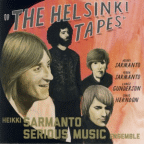 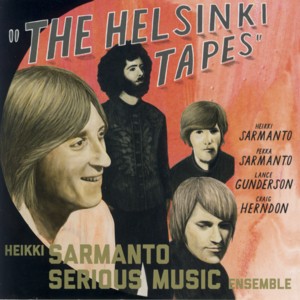 | HEIKKI SARMANTO SERIOUS MUSIC ENSEMBLE ~ THE HELSINKI TAPES VOL.1
SVART 398 (Barcode: 6430050667788) ~ FINLAND ~ Free Jazz / Improvised Music
Recorded: 1971 Released: 2016
This is the first volume of a fantastic archival release presenting the music of the great Finnish pianist / composer / bandleader Heikki SarmantoFind albums by this artist and his early quartet, called The Serious Music EnsembleFind albums by this artist, which also included Heikki´s younger brother Pekka SarmantoFind albums by this artist on bass and American guitarist Lance GundersonFind albums by this artist and drummer Craig HerndonFind albums by this artist. The music was recorded live at the Helsinki N-Club by the eighteen years old (at the time of course) recording enthusiast Wille SuurlaFind albums by this artist and the sound quality is absolutely gorgeous.
Readers interested in the genesis of The Serious Music Ensemble and Sarmanto´s early recording chronology are invited to read my review of the "A Boston DateFind albums with this title" album, another archival release documenting this ensemble. The music on this album, which was recorded live on October 11, 1971, features all original material, with four of the pieces composed by Sarmanto, two by Herndon and one by Gunderson. The two Herndon pieces are previously unreleased and the rest of the tracks appear on the following albums by Sarmanto: "CounterbalanceFind albums with this title", "A Boston DateFind albums with this title" and "Magic SongFind albums with this title".
The music is an early form of European Free Jazz, and although the ensemble features electric piano and guitar, has almost nothing to do with Jazz-Rock Fusion, which was extremely popular at the time. The music is mostly improvised and the live environment allows the musicians to expand their personal statements and venture into lengthy solos. But in spite of the Free Form atmosphere, the music remains at all times superbly coherent. It is absolutely stunning to see how concise and minimalistic music like this one can express so much and be so rich in expression, staying elegant and aesthetically superior.
There is no doubt that this is some of the most interesting early European Free Form music. Readers interesting in more comprehensive analysis of this music and its relation to American Free Form music at the time are again invited to check out the a.m. review of the "A Boston DateFind albums with this title" album.
It is a miracle that such an exquisite material, both as far as the music and the recording quality are concerned, is finally released, almost half a Century after it was recorded. Kudos to SvartFind albums on this label Records for releasing this and other archival Finnish Jazz albums and keeping the legacy of the Finnish Jazz alive!
| | Updated: 29/09/2017Posted: 29/09/2017 | CD 1 Remastered Recommend To A Friend |
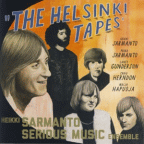 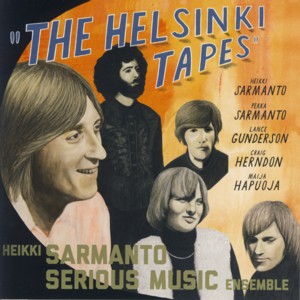 | HEIKKI SARMANTO SERIOUS MUSIC ENSEMBLE ~ THE HELSINKI TAPES VOL.2
SVART 399 (Barcode: 6430050667818) ~ FINLAND ~ Jazz
Recorded: 1971 - 1972 Released: 2016
This is the second volume of a fantastic archival release presenting the music of the great Finnish pianist / composer / bandleader Heikki SarmantoFind albums by this artist and his early quartet, called The Serious Music EnsembleFind albums by this artist, which also included Heikki´s younger brother Pekka SarmantoFind albums by this artist on bass and American guitarist Lance GundersonFind albums by this artist and drummer Craig HerndonFind albums by this artist. Wonderful vocalist Maija HapuojaFind albums by this artist sings on nine tracks and saxophonist Eero KoivistoinenFind albums by this artist plays on one track. The music was recorded live at the Helsinki N-Club by the eighteen years old (at the time of course) recording enthusiast Wille SuurlaFind albums by this artist and the sound quality is absolutely gorgeous.
Readers interested in the genesis of The Serious Music Ensemble and Sarmanto´s early recording chronology are invited to read my review of the "A Boston DateFind albums with this title" album, another archival release documenting this ensemble. The music on this album, which was recorded live on October 11, 1971 and December 4, 1972, features almost entirely original material composed by Sarmanto, except for one track which was composed by the little known American pianist Herbie NicholsFind albums by this artist. The Nichols piece is previously unreleased and the rest of the tracks appear on the following albums by Sarmanto: "CounterbalanceFind albums with this title", "Like A FragonardFind albums with this title", "A Boston DateFind albums with this title", "Flowers In The WaterFind albums with this title" and "Everything Is ItFind albums with this title" and the Koivistoinen album "3rd VersionFind albums with this title".
The music is an early form of modern European Jazz, and although the ensemble features electric piano and guitar, it has only a limited proximity to Jazz-Rock Fusion, which was extremely popular at the time. The music is mostly song related, in contrast to the music presented on the first volume, but is still extensively improvised and quite complex. Hapuoja´s vocals and vocalese parts take the music into a different dimension and her performances are simply hair-raising. There is a strong sense of melody but the lengthy tunes develop significantly from the initial statement of the melodic theme to powerful instrumental climaxes, serving as vehicles for the musicians to fully explore their ideas.
There is no doubt that this is some of the most interesting early modern European Jazz, which by the time this music was recorded had already established its own identity. It is also a superb document of the burgeoning Finnish Jazz scene, which was simply exploding with talent at the time. The songs are also a marvelous example of the Poetry & Jazz idiom, which enjoyed a wonderful and fruitful bloom during the early days of Finnish Jazz.
It is a miracle that such an exquisite material, both as far as the music and the recording quality are concerned, is finally released, almost half a Century after it was recorded. Kudos to SvartFind albums on this label Records for releasing this and other archival Finnish Jazz albums and keeping the legacy of the Finnish Jazz alive!
| | Updated: 29/09/2017Posted: 29/09/2017 | CD 1 Remastered Recommend To A Friend |
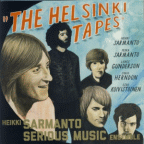 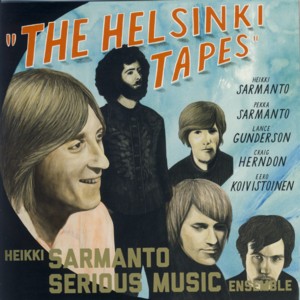 | HEIKKI SARMANTO SERIOUS MUSIC ENSEMBLE ~ THE HELSINKI TAPES VOL.3
SVART 400 (Barcode: 6430050667849) ~ FINLAND ~ Jazz
Recorded: 1971 - 1972 Released: 2016
This is the third volume of a fantastic archival release presenting the music of the great Finnish pianist / composer / bandleader Heikki SarmantoFind albums by this artist and his early quartet, called The Serious Music EnsembleFind albums by this artist, which also included Heikki´s younger brother Pekka SarmantoFind albums by this artist on bass and American guitarist Lance GundersonFind albums by this artist and drummer Craig HerndonFind albums by this artist. Legendary Finnish saxophonist Eero KoivistoinenFind albums by this artist plays on four tracks. The music was recorded live at the Helsinki N-Club by the eighteen years old (at the time of course) recording enthusiast Wille SuurlaFind albums by this artist and the sound quality is absolutely gorgeous.
Readers interested in the genesis of The Serious Music Ensemble and Sarmanto´s early recording chronology are invited to read my review of the "A Boston DateFind albums with this title" album, another archival release documenting this ensemble. The music on this album, which was recorded live on October 11, 1971 and December 4, 1972, features entirely original material, with two compositions each by Sarmanto, Herndon and Koivistoinen. The two Herndon pieces are previously unreleased and the rest of the tracks appear on the following albums by Sarmanto: "CounterbalanceFind albums with this title", "A Boston DateFind albums with this title" and "MoonflowerFind albums with this title". and the Koivistoinen album "3rd VersionFind albums by this artist".
The music is an early form of modern European Jazz, and although the ensemble features electric piano and guitar, it has only a limited proximity to Jazz-Rock Fusion, which was extremely popular at the time. On the four tracks on which Koivistoinen is featured as the main soloist, the music is mostly swinging, with clearly stated melodic themes, which are then expanded into lengthy improvisations. Both Sarmanto and Koivistoinen display superb instrumental abilities, and even this "informal" live recording clearly emphasizes their respective talents. The two quartet tracks without the saxophonist are more Free Form oriented, similar to the material included on the first volume of this release. All the performances are a showcase of great interplay and cooperation between the participants.
There is no doubt that this is some of the most interesting early modern European Jazz, which by the time this music was recorded had already established its own identity. It is also a superb document of the burgeoning Finnish Jazz scene, which was simply exploding with talent at the time. Readers interested in the circumstances surrounding the recording of the "3rd VersionFind albums with this title" album are welcome to read my liner notes of the album.
It is a miracle that such an exquisite material, both as far as the music and the recording quality are concerned, is finally released, almost half a Century after it was recorded. Kudos to SvartFind albums on this label Records for releasing this and other archival Finnish Jazz albums and keeping the legacy of the Finnish Jazz alive!
| | Updated: 29/09/2017Posted: 29/09/2017 | CD 1 Remastered Recommend To A Friend |
|







